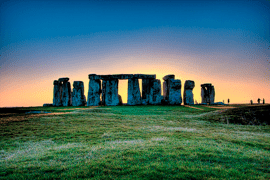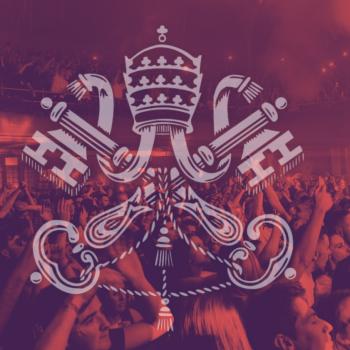By the Paganism Gateway Team
 Paganism is not one unified religious tradition but a way of expressing sacred relationships between tangible and intangible "persons." Pagans emphasize ritual and artistic performance over doctrine, and many stress the immanent nature of Deity as it/they appear in humans, animals, and the land, as well as in what we call the supernatural realm. Pagan religious traditions, whether new or old, value experience and practice over belief and creeds.
Paganism is not one unified religious tradition but a way of expressing sacred relationships between tangible and intangible "persons." Pagans emphasize ritual and artistic performance over doctrine, and many stress the immanent nature of Deity as it/they appear in humans, animals, and the land, as well as in what we call the supernatural realm. Pagan religious traditions, whether new or old, value experience and practice over belief and creeds.
Michael York, a leading scholar of contemporary Paganism and member of the steering committee of the American Academy of Religion's Contemporary Pagan Studies Group, defines these relationships as "an affirmation of interactive and polymorphic sacred relationship by the individual or community with the tangible, sentient and/or nonempirical" (Pagan Theology, 157).
To unpack his definition, we say that Pagan practitioners may function individually or collectively in interactive ways with multiple expressions of divinity. Divine energies or persons may be experienced both in the physical world and as spiritual beings, not to mention temporarily manifesting through humans (spirit possession). Respect for Earth as a sacred person is crucial to most Pagan traditions.
By their nature, Pagan religions tend towards multiplicity, with no permanent organization on national or transnational levels. There are no authority figures beyond small groups. Several umbrella organizations do exist, such as the Pagan Federation in the UK (with some presence in other countries) or the Covenant of Unitarian Universalist Pagans in the United States, which is a formally organized "interest group" within the UU denomination.
Paganism is a nature-based religion. It is also a new religious movement; an esoteric/metaphysical spirituality that draws upon 19th century alternative/occult/magical traditions; a part of the extended family of contemporary New Age/Esoteric religions; a reconstruction of indigenous European or prehistoric matriarchal traditions; and an umbrella term for a wide variety of paths (from Asatru to Discordianism to "green eclectic Wicca"). The historical focus and current understanding of the religion vary by path and, often, by individual adherent.
The Paganism Gateway on Patheos is a place to learn about the history, mythology, beliefs, and practices of contemporary Paganism, and to explore Paganism in comparison to the world's other faiths and religious practices. The Paganism Gateway strives to reflect the range of beliefs and practices of adherents who self-identify as Pagan. Some paths, however (most notably, Wicca) are represented more comprehensively on Patheos.com. If you feel your particular Pagan path is underrepresented in the Paganism Gateway, we invite you to discuss it in the forums, submit essays or information for possible inclusion on the site, or contact the Paganism Gateway team.
To read more about Paganism, visit the Pagan Path in the Patheos library.
1/1/2000 5:00:00 AM




